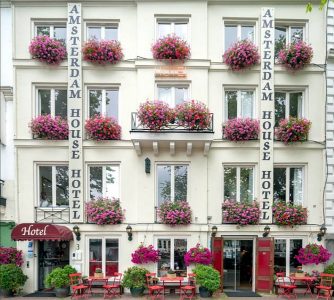Major reduction of horse meat imports from American-continents
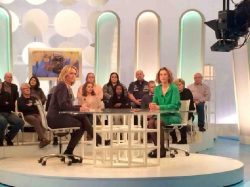 In March, our investigation into the horrors behind the import of horse-meat from North, Central & South America into The Netherlands led to extensive media attention in the Netherlands. Television program Radar broadcasted a full program and two follow-ups on the issue, and numerous newspapers including Trouw picked up the story. We also held many meetings with supermarkets and snack-producers selling imported horsemeat. This led to the following successes:
In March, our investigation into the horrors behind the import of horse-meat from North, Central & South America into The Netherlands led to extensive media attention in the Netherlands. Television program Radar broadcasted a full program and two follow-ups on the issue, and numerous newspapers including Trouw picked up the story. We also held many meetings with supermarkets and snack-producers selling imported horsemeat. This led to the following successes:
- Dutch supermarket chains Deen and Coop immediately stopped selling horsemeat from non-EU origin.
- Dutch supermarket chain Jumbo stopped selling horsemeat from Argentina. A small percentage of the horsemeat it imports is still from Uruguay, but they have stated they will fully switch to an alternative supplier in Europe by the end of 2015.
- Albert Heijn, the largest supermarket chain, has also stopped selling horsemeat from Argentina. Their horsemeat-sausages are still from Uruguay however, but they have stated they are considering sourcing this in the EU as well.
- In reaction to our investigation, the Dutch label Mora which sells its snacks all over the Benelux has gone completely ‘horsemeat-free’.
- The big snack producer Ad van Geloven has replaced some of its imported horsemeat with European horsemeat to make its snacks; their aim is to stop using imported horsemeat from the Americas completely.
- The Food and Veterinary Office sent an own inspection team to Mexico, which affirmed our concerns. This led to the EU deciding to ban the import of horsemeat from Mexico as of March 1 2015.
- Since the EU announced this future ban, the number of horses slaughtered in Mexico has dropped by 60%. Besides that, 93 slaughterhouse employees had to stop work and one slaughterhouse was closed down. Another two are now drastically smaller.
- Our investigation led to a debate being scheduled for 2015 in Dutch Parliament on the ethical and health safety concerns surrounding horsemeat import.
Important steps forward in Turkey
Our project aimed at reducing some of the horrendous animal-suffering in Turkish slaughterhouses in 2014 saw several significant successes:
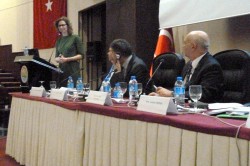 The Dutch government organized a conference on farm-animal welfare together with the Turkish Ministry of Agriculture, held in Ankara. We were invited to give a lecture on the current situation in Turkey and what actions are necessary to improve animal-welfare during slaughter.
The Dutch government organized a conference on farm-animal welfare together with the Turkish Ministry of Agriculture, held in Ankara. We were invited to give a lecture on the current situation in Turkey and what actions are necessary to improve animal-welfare during slaughter.- We gave lectures to veterinarian students at the University of Ankara and the University of Istanbul on how they can improve welfare at slaughter.
- We gave a presentation to the Turkish Ministry of Agriculture about the suffering of animals inside the Turkish slaughterhouses we visited; then, they arranged a training program on animal welfare for all of their official veterinarians and used our material to do so.
- Over a hundred people, many of whom play an important role in the Turkish meat industry, visited our two-day seminar on ‘How to Reduce Suffering During Slaughter’ that we organized with AWF at the Istanbul faculty of Veterinarian Medicine in October.
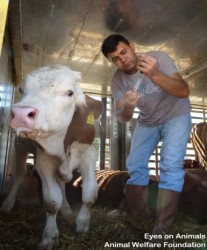
- As a result of our work, two Turkish companies manufacturing slaughterhouse equipment for Halal slaughterhouses in Turkey and throughout the Middle East announced that they would start producing alternative, more animal-friendly restraint equipment to phase out the live hoisting of cattle.
- We launched a ‘Halal Slaughter Watch’ website in English and Turkish (www.halal-slaughter-watch.org) to educate, inform and share good practices with those involved in Halal slaughter. At the end of 2014 already 40,000 people had visited the website.
First companies participated in training for chicken catchers
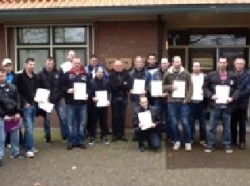 On our initiative, SVO – the organization responsible for training people who work in the food business – now offers a training course for chicken catchers. This training course focuses on how to handle the chickens in such a way as to prevent injuries and extreme stress for the animals.
On our initiative, SVO – the organization responsible for training people who work in the food business – now offers a training course for chicken catchers. This training course focuses on how to handle the chickens in such a way as to prevent injuries and extreme stress for the animals.
Animal-friendlier poultry crate in the making
Eyes on Animals asked a plastic company to design a welfare-friendlier poultry crate with side access doors as an alternative for the crates that are currently used. The current crates cause much suffering because wounded or ill animals cannot be accessed to be given any help or relief. In 2014, the plastic company finished a prototype and a large Dutch chicken transporter started testing them. Based on their experience, several adjustments are currently being made. When the crate is ready it can be used commercially and will then reduce suffering in practice.
Dutch government tightens control on poultry transports
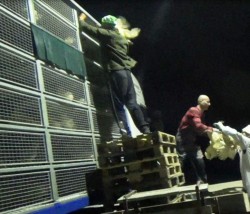 In 2013 the Dutch Ministry of Agriculture announced it would tighten control on poultry transport, particularly over long-distances. This decision was prompted by Eyes on Animals’ reports and advocacy meetings with representatives of the Ministry. In 2014 several official actions were announced:
In 2013 the Dutch Ministry of Agriculture announced it would tighten control on poultry transport, particularly over long-distances. This decision was prompted by Eyes on Animals’ reports and advocacy meetings with representatives of the Ministry. In 2014 several official actions were announced:
- More inspections at the moment of catching (on the farm).
- Replacement of crates that are broken and actions taken when broken crates are observed.
- Check if water and feed is available for birds transported across longer distances.
In addition, the Ministry considers making GPS systems and forced ventilation mandatory for poultry transports.
Concrete improvements at slaughterhouses
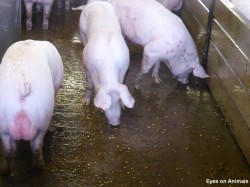 Eyes on Animals frequently inspects slaughterhouses to check whether animal welfare improvements can be made to reduce suffering. In 2014 many slaughterhouses followed our recommendations to:
Eyes on Animals frequently inspects slaughterhouses to check whether animal welfare improvements can be made to reduce suffering. In 2014 many slaughterhouses followed our recommendations to:
- Replace electric prods with humane handling instruments.
- Sprinkle corn in the lairages to reduce stress and prevent the animals from fighting.
- Limit shadows and reflections causing animals to panic.
- Reduce noise by installing rubber stoppers on gates, redirecting pipes from hydraulics, etc.
- Keep automatic doors from pushing or scaring animals
- Install video cameras to better monitor the treatment of animals in the plant.
Shaking up the milk industry
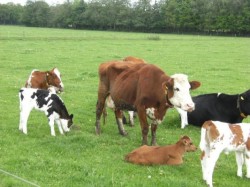 In November 2014 we released ‘Giving Milk a Good Shake – looking at better ways of producing dairy’. This report was based on dozens of inspections we conducted on newborn calves being taken away from the mother cows, “ retired” dairy cows in very poor shape being sold at markets, long-distance transport of the young male calves to factory farms and cow slaughterhouses. The report also covered the rules for special milk labels like Organic, Demeter and Weidemelk, to show that spending a few extra cents can make a difference, but also to show that there is no ideal milk label yet, covering the welfare aspects also of the new-born calves.
In November 2014 we released ‘Giving Milk a Good Shake – looking at better ways of producing dairy’. This report was based on dozens of inspections we conducted on newborn calves being taken away from the mother cows, “ retired” dairy cows in very poor shape being sold at markets, long-distance transport of the young male calves to factory farms and cow slaughterhouses. The report also covered the rules for special milk labels like Organic, Demeter and Weidemelk, to show that spending a few extra cents can make a difference, but also to show that there is no ideal milk label yet, covering the welfare aspects also of the new-born calves.
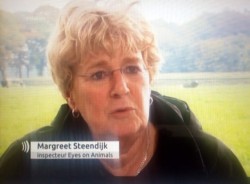 Dutch television program Tros Radar extensively covered the report in one of their shows and aired some “best practice” dairy farms, which prompted a lively discussion on our Facebook page and the Radar web page. Eyes on Animals is now in discussion with a dairy farmer and supermarket chain about getting milk soon on the shelves indicating that both the male and female calves are not separated after birth but kept together in a herd.
Dutch television program Tros Radar extensively covered the report in one of their shows and aired some “best practice” dairy farms, which prompted a lively discussion on our Facebook page and the Radar web page. Eyes on Animals is now in discussion with a dairy farmer and supermarket chain about getting milk soon on the shelves indicating that both the male and female calves are not separated after birth but kept together in a herd.

